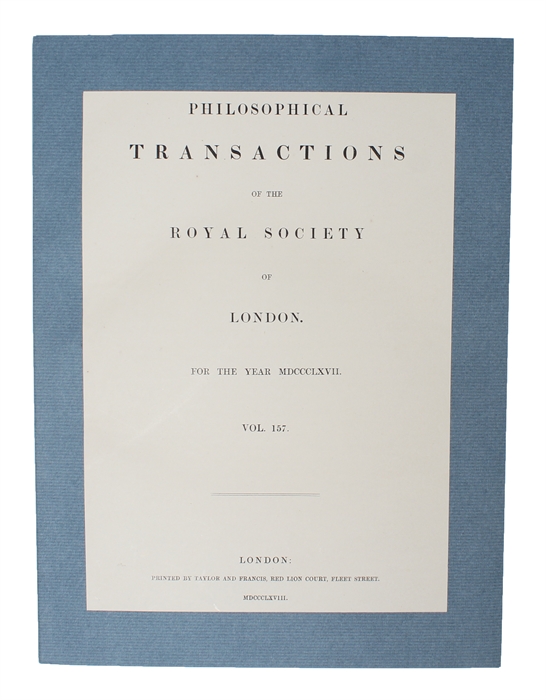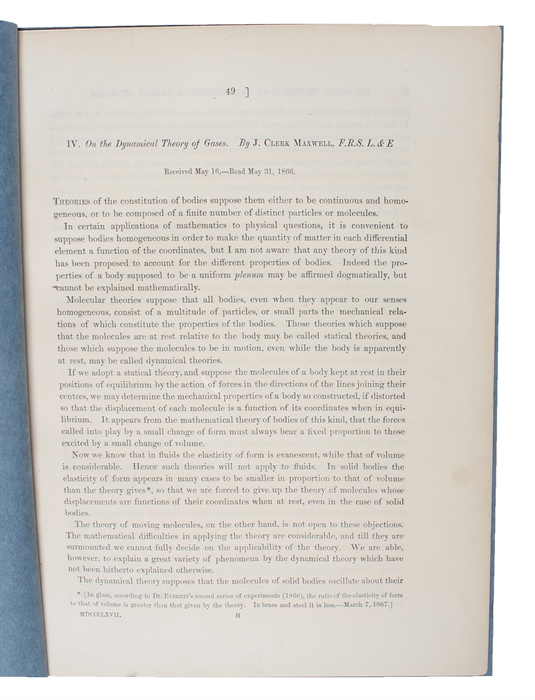THE "MAXWELL-DISTRIBUTION"S FINAL FORM - A MAIN PAPER IN 19TH CENTURY PHYSICS.
MAXWELL, JAMES CLARK.
"On the Dynamical Theory of Gases." Received May 16, - Read May 31, 1866.
London, Taylor and Francis, 1867. 4to. Extracted and rebound in recent green plain wrappers. Title-page of vol. 157 pasted on to front wrapper. A fine copy. Pp. 49-88.
First appearance of this seminal paper (in its full version from "Transactions"), representing the announcement of Maxwell's final "Theory of Gases" and introduces the "Maxwell Distribution" in its final form, a statistical means of describing aspects of the kinetic theory of gases, a theory, together with his electromagnetic theory, are considered to be SOME OF THE GREATEST ADVANCES IN PHYSICS OF ALL TIMES. Everett considers this paper (1868) to be Maxwell's greatest single paper. Maxwell's discoveries laid the foundations of special relativity and quantum mechanics.
One of Maxwell's major investigations was on the kinetic theory of gases. Originating with Daniel Bernoulli, this theory was advanced by the successive labours of John Herapath, John James Waterston, James Joule, and particularly Rudolf Clausius, to such an extent as to put its general accuracy beyond a doubt; but it received enormous development from Maxwell, who in this field appeared as an experimenter (on the laws of gaseous friction) as well as a mathematician.
In 1866, he formulated statistically, independently of Ludwig Boltzmann, the Maxwell-Boltzmann kinetic theory of gases. His formula, called the Maxwell distribution, gives the fraction of gas molecules moving at a specified velocity at any given temperature. In the kinetic theory, temperatures and heat involve only molecular movement. This approach generalized the previously established laws of thermodynamics and explained existing observations and experiments in a better way than had been achieved previously. Maxwell's work on thermodynamics led him to devise the Gedankenexperiment (thought experiment) that came to be known as Maxwell's demon.
Order-nr.: 54393


